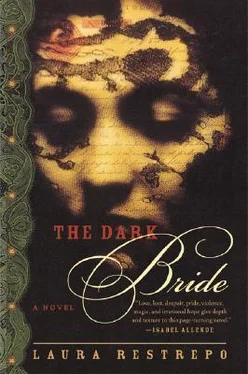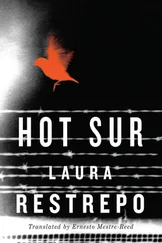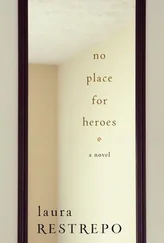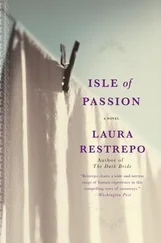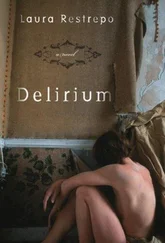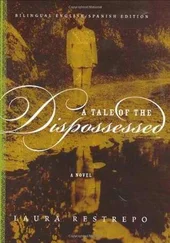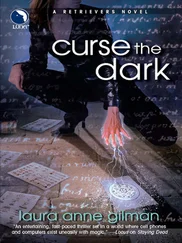“In addition, he sold condoms made from animal intestines,” Sacramento continues, “also patented by him and promoted as the modern solution against pregnancy and infection, but infamous among users for being uncomfortable, slippery, and of dubious efficacy.”
“Start suffering, men of tender heart: La Hermosa has returned!” proclaimed Piruetas in falsetto when he saw Sayonara passing, and faces unknown to her turned to stare at her.
“Go eat shit, you creature of ill omen,” she retorted, driving him away with her hand. “Last time you tossed a compliment at me you turned my life into shit, and I still haven’t recovered.”
Although she hadn’t noticed it, many eyes had seen her, had followed her step by step, had caught her scent from the very moment she set foot back in the pueblo, and now Piruetas’s announcement spread from house to house: She had returned.
For the second time the child puta took the pueblo; Sayonara, the puta -wife; Amanda the bride dressed in white; the wife now without her husband and once again dressed for night; the beauty challenging the world as she did in those other times, those that people wanted to forget, come hell or high water.
“Maybe if she had come back with her hair covered up and her body hidden in the sad, sober novice’s dress that she wore in Villa de la Virgen del Amparo,” speculates Machuca, “maybe.”
And as if her reappearance weren’t enough, she had come dragging astride a burro the exemplary and resuscitated image of sin with all of its consequences: Fideo, covered with cankers, some hidden and one displayed in the place that most terrifies and offends others, the middle of her face. Sayonara hadn’t finished telling Piruetas to go eat shit when she detected in the surrounding multitude the subtle, spasmodic, and frighteningly synchronized reflexes of cattle the instant before they stampede. In the midst of an unforeseen paralysis of air, a sudden, dark, collective choreography took shape into which she tried to integrate herself without knowing why, perhaps out of mere survival instinct.
“This is why I came back to the pueblo, to face my destiny,” Todos los Santos tells me that Sayonara was able to understand in a sparkle of final lucidity.
Seconds later she was imprisoned by a human barrier, forced into the front row just across from where a spontaneous band of wrathful citizens was sacrificing a thin man, of short stature, in a white, unbuttoned shirt, the tail of which hung outside his pants.
“So they didn’t fall upon her?”
“Hush your mouth and knock on wood,” said Todos los Santos as she rapped on the table with her knuckles. “They got another Christian soul and not her, because as Fideo said the other day, Sayonara carried that black bird around on her shoulder, but she kept it pacified and fed it from her hand. But she didn’t miss a single detail of the incident, and that man’s passion and death were so embedded in her that for several days afterward she kept repeating, like an automaton, that he was small and skinny, that his shirt was hanging outside his pants, and before he expired he tried to say something no one understood. He was a zapatero, you know? What you would call a shoe repairer. A humble craftsman with an eccentric name, Elkin Alexis Alpamato, originally from Ramiriquí, in Boyacá, who had lived in Tora for three and a half years. We all knew him because we took our shoes to him to repair. When a heel wore out, twisted, or broke open, there was no one like him to restore it with new leather and a reinforced metal tap. He alleged that high heels were one of the seven greatest inventions of civilization and that together with the silk stocking had been Eve’s true sin in paradise, the real apple of damnation. ‘Alpamato,’ we would say, ‘make these heels ready to strike sparks on the pavement tonight,’ and he would, because he liked to deliver.”
It took sixty seconds to kill him and they did it by kicking him, in the single, fulminating lashing out of an uncontrollable centipede, a swift and voracious assault by starved sparrows on a crust of bread. After the beating, he stood up in a last attempt at decency, leaned against a wall, tried to find his last voice, and then fell again, already dead, a poor bloody rag without guilt or redemption. Sayonara watched the killing without taking her eyes off the victim, as if seeing again something she had already seen, what she had always foreseen, as if she were a witness of something that was supposed to occur but didn’t, as if it weren’t that man but she herself who should have died that night, at that predetermined hour and in the desolation of that street corner.
“She had to witness such a horrifying scene the very day she came home,” Machuca tells me, “as if the city itself had decided to bring her up to date on the new times that had settled in around here.”
“What had the zapatero done?” I ask. “Why did they kill him? Who killed him?”
“Regular people; don’t think they were murderers or professional evil-doers. Small-business men on Calle Caliente, enraged by the evictions.”
Never before and never again were the four sources of power in such agreement, nor did they act in such synchronization. Public health measures were preached from the pulpit, the Tropical Oil Company performed marriage counseling, the Fourth Brigade decided who should be pillars of morality, and the mayor, who was the representative for Tora in the National Conservative Directorate and the fellow party member of Senator Mariano Azcárraga Caballero, the ingrate who drove beautiful Claire to her grave, was the individual who singled out those who deserved scorn and punishment for breaking ethical, hygienic, labor, and public order laws.
One of the central aims of this four-party strategy was the leveling of the red-light district, because they wanted to build on that land barrios of family housing in the image and likeness of the Barrio Staff, but in a squashed, Creole, and proletarian version. They professed to want to do away with the puterío and the red-light districts. But what it really boiled down to was that everything that had to do with poverty looked red to them, as if the poor barrio and the red-light district were one and the same. After one of their evictions, on the day Sayonara returned, the victims descended on the plaza, pushing in front of them anything they could, movable or immovable.
“But why the shoe repairman? What had he done?”
“Nothing. He hadn’t done anything.”
He only tried to calm the crowd to prevent them from vandalizing, but the level of discontent had grown so acute that it was his unfortunate fate to become the scapegoat and receive their wrath.
“Of course, Sayonara would have given a different explanation for the events,” Olga informs me. “If you had asked Sayonara, she would have told you that the shoe repairman, without knowing it, had swapped his fate for hers.”
After the crime, for a few eternal minutes, the city was submerged in a rare lethargic silence and absence, as if everyone had run inside their houses or their own hearts to hide from the horror, and it was during this span of otherworldly stillness that Sayonara walked down Calle Caliente and entered La Catunga, feeling foreign inside her own body, looking at this planet with the eyes of a stranger and trembling with apprehension as great or greater than that first time, so many years ago. Then she saw Sacramento again, the boy, sitting on his cart with his curly eyelashes and his strawlike hair, warning her that anyone who entered that place could never leave.
She looked for Todos los Santos’s house and found nothing but rubble. She went back, looked again, but she found nothing, and then she asked, Olga assures me, whether she might be dead after all, and whether the episode with the zapatero had been one of those pitiful lies that the dead tell themselves to palliate the irreversibility of their situation.
Читать дальше
